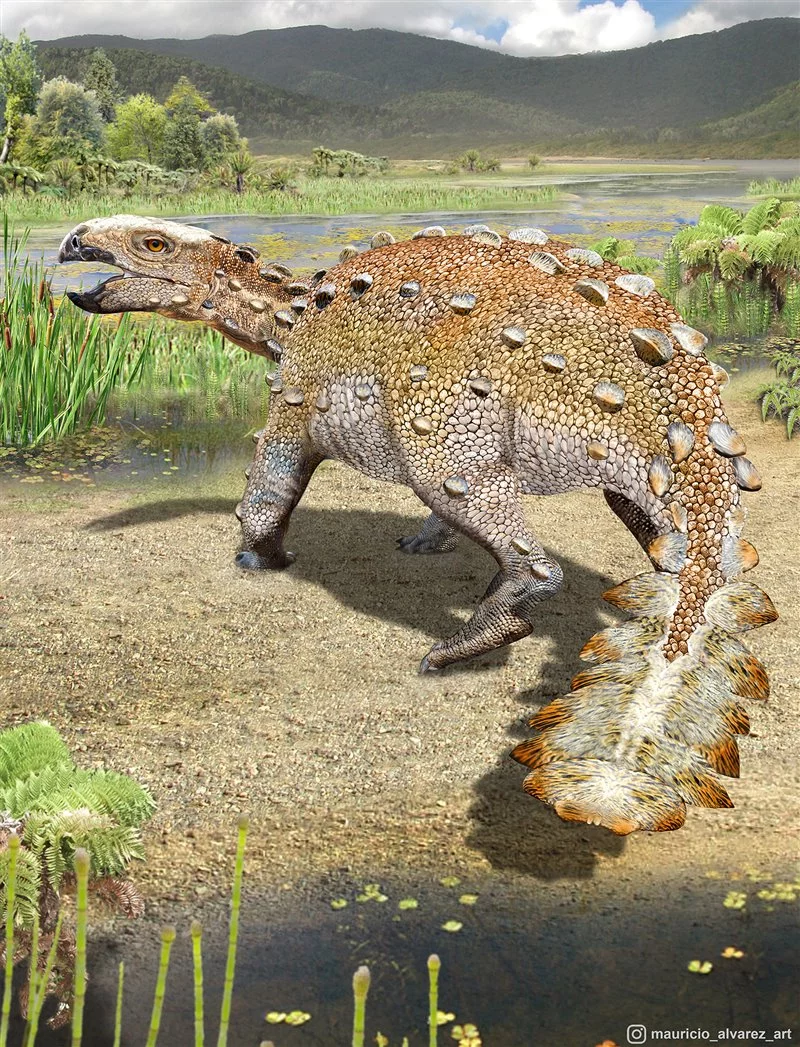 As often happens with some species of dinosaurs, the group of Ankylosaurs - Ankylosauria - Laurasia, ie., the large landmass of northern resulting from the separation of the supercontinent Pangea, are diverse and well studied. However, those of the south, those that inhabited the part corresponding to Gondwana, are rare and little known.
As often happens with some species of dinosaurs, the group of Ankylosaurs - Ankylosauria - Laurasia, ie., the large landmass of northern resulting from the separation of the supercontinent Pangea, are diverse and well studied. However, those of the south, those that inhabited the part corresponding to Gondwana, are rare and little known.
This is important because, in fact, it is believed that Gondwana was precisely the place where the first ankylosaurs arose, a matter on which a new article published in the journal Nature under the title Bizarre tail weaponry in a transitional ankylosaur comes to light. from subantarctic Chile , in which Alexander Vargas , a biologist specializing in vertebrate paleontology from the University of Chile , describes with his colleagues the well-preserved and mostly complete skeleton of a small ankylosaur.
The find provides new insights into the origin and early evolution of these armored dinosaurs and reveals that Stegouros elengassen developed a large tail weapon, unlike those seen in other dinosaurs.
The specimen, about two meters in size, dates from the late Cretaceous period - around 71.7 to 74.9 million years ago - and was discovered in Magallanes, in the extreme south of Chile. But the extraordinary thing about the discovery is that, according to Vargas's team, it is a new species of dinosaur that researchers have named Stegouros elengassen.
"Stegouros elengassen has distinctive characteristics like those of other ankylosaurs," explains Vargas. "An example can be his skull," he specifies. "But the rest of its skeleton is believed to be largely primitive, with some stegosaurus features."
According to the work, Stegouros also possessed at the end of its tail a large weapon composed of seven pairs of bony deposits flattened and fused into a structure similar to a frond, that is, similar to the leaves of a fern- along of the distal part of its tail, which differentiates it from the pairs of beaks and clubs of other armored dinosaurs.
In addition, the phylogenetic analyzes, equivalent to the construction of the ankylosaurus family tree, allowed the team to recognize Stegouros as an ankylosaurus specifically related to the Kunbarrasaurus found in Australia or the Antarctopeltas of Antarctica.
In light of their findings, the authors conclude that different branches of the ankylosaurus family tree could have existed in Laurasia and Gondwana respectively after the final separation of these supercontinents in the late Jurassic period. This proposal, they say, along with other possibilities raised by the Stegouros discovery, reiterates how much we have yet to learn about the evolution of armored dinosaurs, particularly in Gondwana. (Text and photo: National Geographic)